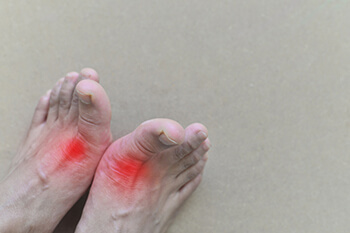
There are a multitude of changes that happen to the body during pregnancy. These can affect the feet, and many pregnant women find relief from resting and elevating their feet at various times during the day. A common condition during pregnancy is flat feet, which causes the arch to temporarily disappear as weight is gained. An effective remedy for flat feet during this time can include wearing shoes that fit correctly, and wearing custom-made orthotics. These types of insoles may be helpful in providing the support that is needed to relieve the pain from achy feet. Hormonal changes may cause the feet to have hot or burning sensations, possibly leading to an increase in body temperature. The majority of foot conditions during pregnancy may be managed by drinking plenty of water daily, keeping physically active, and wearing seamless socks, which may help poor circulation. It is suggested that women who have foot pain during pregnancy speak to a podiatrist who can offer effective relief remedies.
Pregnant women with swollen feet can be treated with a variety of different methods that are readily available. For more information about other cures for swollen feet during pregnancy, consult with the podiatrists from Boston Common Podiatry. Our doctors will attend to all of your foot and ankle needs.
What Foot Problems Can Arise During Pregnancy?
One problem that can occur is overpronation, which occurs when the arch of the foot flattens and tends to roll inward. This can cause pain and discomfort in your heels while you’re walking or even just standing up, trying to support your baby.
Another problem is edema, or swelling in the extremities. This often affects the feet during pregnancy but tends to occur in the later stages.
How Can I Keep My Feet Healthy During Pregnancy?
- Wearing orthotics can provide extra support for the feet and help distribute weight evenly
- Minimize the amount of time spent walking barefoot
- Wear shoes with good arch support
- Wear shoes that allow for good circulation to the feet
- Elevate feet if you experience swelling
- Massage your feet
- Get regular, light exercise, such as walking, to promote blood circulation to the feet
If you have any questions please feel free to contact our office located in Boston, MA . We offer the newest diagnostic and treatment technologies for all your foot and ankle needs.














